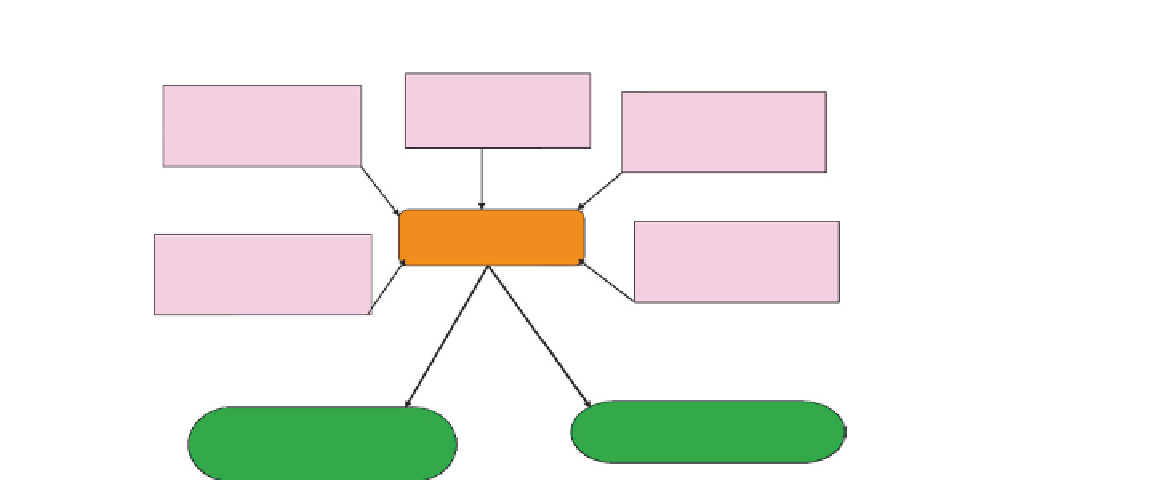Biomedical Engineering Reference
In-Depth Information
Cells
(stem cells: EPCs, hMSCs;
osteoblasts, fibroblasts)
Materials
(synthetic and natural polymers,
Inorganic materials)
Structures
(micro- and nanoscale features,
porosity, pore size)
Titanium implants
Chemical delivery
(controlled release of factors,
RGD peptides, etc.)
Chemical modification
( v, PEG, acid etching, etc.)
Tissue responses
(osseointegration, osteoconductivity
osteoinductive, bone-to-implant contact)
Cellular responses
(adhesion, proliferation,
differentiation, gene expression,
protein production)
FIGURE 8.1
Methods of modification of Ti implants and their outcomes.
increased number of extensions and filopodia
[75]
. This is correlated with an increase in the nanotube
diameter from the 30 to 100 nm range. Changes in the morphology of osteoblasts growing on titanium
nanotube arrays are also dependent on both the diameter of the nanotube and the spacing between the
nanotubes
[75]
. Hemispherical cavities or indentations also affect the osteoblasts in a similar way. For
instance, cavities in the 10 nm range cause the cells to become polygonal in shape with a high number
of filopodia
[125]
.
8.4.2
Cell Adhesion
The nanotopography surface can also affect how well the cells adhere; however, the level of cellular
adhesion can be difficult to determine as the cells reach confluence. Titanium nanotubes increase the
number of cells that adhere to the surface
[75,126]
when compared to a flat Ti surface. This may be
due to the increased hydrophilicity of the surface caused by the nanotube array. Nanophase surfaces
of titanium have also been shown to increase cellular adhesion
[24]
. Nanoscale hemisphere structures,
on the other hand, did not increase the number of adhered cells when compared to the flat titanium
surface
[86]
. In addition, nanophase materials made up of grains that are compacted together and are
smaller than 100 nm in diameter cause an increase in surface energy, leading to the enhanced cellular
adhesion
[127]
.
8.4.3
Cell Proliferation
In addition to cell morphology and adhesion, the proliferation of bone cells on implant surfaces
can also be altered by modifying the surface properties to create nanotopography on titanium

